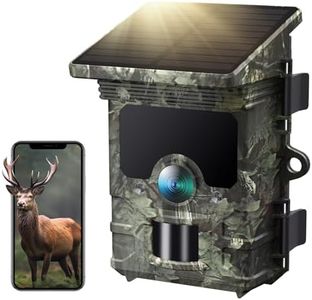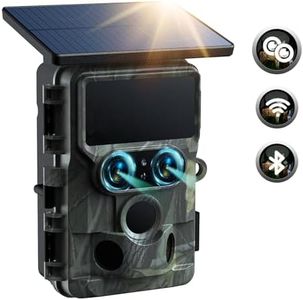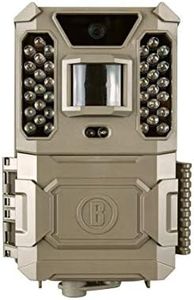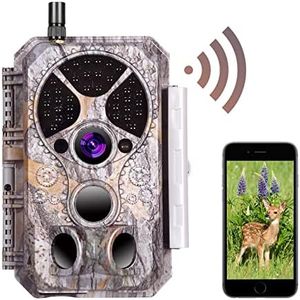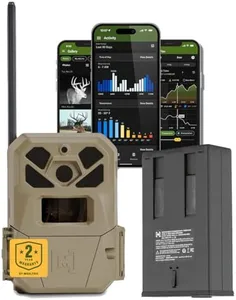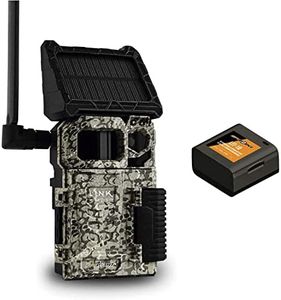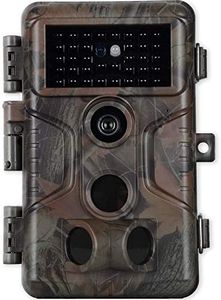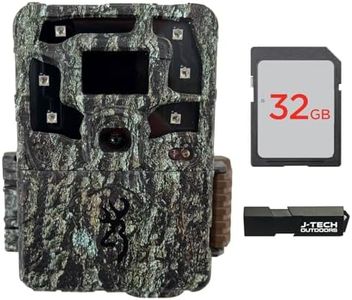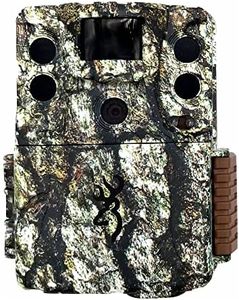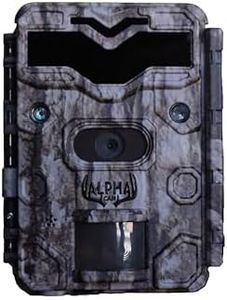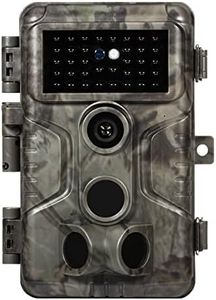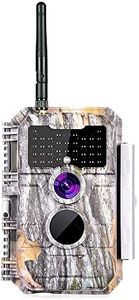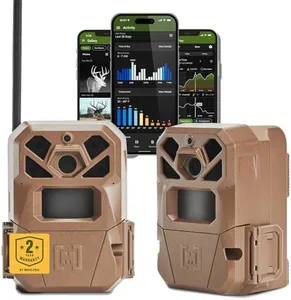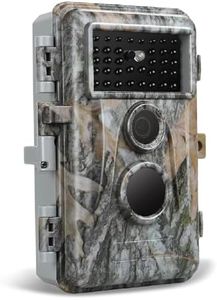We Use CookiesWe use cookies to enhance the security, performance,
functionality and for analytical and promotional activities. By continuing to browse this site you
are agreeing to our privacy policy
10 Best Trail Camera For Birds
From leading brands and best sellers available on the web.Buying Guide for the Best Trail Camera For Birds
Choosing a trail camera for birds can be a fun way to capture amazing wildlife moments right in your own backyard. To get the best results, it's important to understand which camera features will help you spot and record birds most clearly and reliably. Your choice should match your environment and how you plan to use the camera—whether you want clear close-ups, lots of photos, or the ability to leave the camera unattended for days. Consider where you will set it up, what type of birds you hope to capture, and if you want just photos, videos, or both.Image Resolution (Megapixels)Image resolution describes how sharp and detailed your bird photos will be, measured in megapixels (MP). Higher megapixel cameras capture more detail, which is helpful if you want to zoom in on small birds or make large prints. Low-end cameras might offer around 8MP (good for basic identification), mid-range models sit between 12-16MP (producing clear images for social media or home sharing), and high-end models push beyond 20MP for extra detail. If your goal is crisp close-ups or you plan to crop images later, a higher resolution is better. If you just need record shots or won't be enlarging images, a moderate MP count is sufficient.
Trigger SpeedTrigger speed refers to how quickly the camera takes a photo after detecting motion. For birds, which can be quick and unpredictable, a faster trigger speed (around 0.2–0.5 seconds) makes it more likely you'll capture the action before your subject flies away. Slower cameras may miss fast-moving birds or only catch them as they're leaving the frame. If you want clear shots of birds landing or feeding, prioritize a fast trigger speed. For stationary feeders or slower birds, slightly slower speeds may still be acceptable.
Detection RangeDetection range is the maximum distance at which the camera's sensor can pick up movement and trigger a photo or video. For bird watching, a range of 30 to 60 feet is typical—enough to monitor backyard bird feeders or garden spaces. Shorter ranges (under 30 feet) focus on close-up detail but may miss shy or distant birds, while longer ranges can cover more area but sometimes trigger from irrelevant motion like wind-blown branches. Think about where you'll place your camera—if it’s close to feeders, a shorter range works; for larger yard coverage, choose a model with a wider range.
Infrared Night VisionInfrared night vision lets the camera take photos or videos in low light without startling birds with a flash. Some cameras have 'low glow' or 'no glow' LEDs, which are gentler and won’t disturb wildlife. For spotting nocturnal birds or capturing activity at dusk and dawn, night vision is essential. If you’re only interested in daytime activity, you can be less concerned with advanced night vision features.
Battery LifeBattery life determines how long the camera can operate out in the field before you need to change or recharge the batteries. Longer battery life is helpful if you don’t want to disturb birds or check the camera frequently. Low-traffic locations and cameras with energy-saving modes can last for months, while high activity or frequent video usage can drain batteries faster. If you plan to leave the camera unattended for long stretches, look for models with lengthy standby times or the option to add an external power source like a solar panel.
Weather ResistanceWeather resistance ensures your camera can handle rain, wind, and changing temperatures. A weather-sealed casing is vital if you plan to leave your trail camera outdoors in all seasons. If your setup is under shelter, such as on a porch, you have more flexibility. For open-air mounting, pick a camera with robust weatherproofing so you don’t have to worry about moisture damaging the electronics.
Video CapabilityVideo capability allows you to capture moving footage of birds' behavior, which can be more informative and enjoyable than still images. Video resolution can vary—basic models may record low-definition clips, while better models offer HD or even Full HD quality. If you want to see wing flaps or feeding routines, higher resolution and smoother frame rates (like 30 frames per second) provide more visually appealing footage. Choose this based on whether you want simple evidence clips or more detailed, shareable wildlife videos.
Storage CapacityStorage capacity refers to the size of the memory card your camera can use, which impacts how many photos or videos you can save before needing to clear space. Cameras supporting larger memory cards (32GB, 64GB, or more) mean you can leave the camera running longer without checking on it. If you take lots of high-resolution photos or videos, pick a camera with a larger storage option. For occasional or low-activity use, a smaller memory card may be sufficient.
